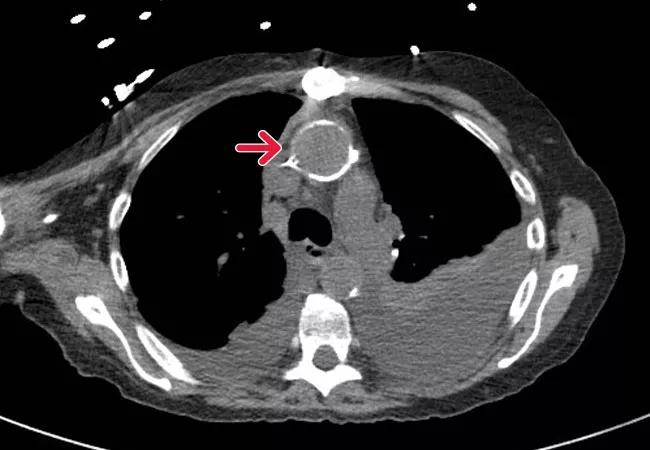Advertisement
Only commonality is a need for individualized, expert care

The overlap between cancer and heart disease in recent years has been a mix of bad and good news. On one hand, cancer diagnoses are on the rise. On the other hand, improved cancer therapies are resulting in the largest cohort of cancer survivors we’ve ever seen. At the same time, those survivors often face a secondary battle 15 to 25 years later in the form of radiation-associated heart disease.
Advertisement
Cleveland Clinic is a non-profit academic medical center. Advertising on our site helps support our mission. We do not endorse non-Cleveland Clinic products or services. Policy
“Radiation therapy for some forms of cancer involves a large dose of radiation to the chest,” says Milind Desai, MD, Director of Cardiovascular Imaging Research at Cleveland Clinic. “The heart can suffer collateral damage as a result.”
Although improved radiation therapy techniques enable reduced dosage and volume of radiation exposure, radiation-treated cancer survivors remain at increased risk of cardiovascular diseases. These patients are increasingly presenting with complicated cases of coronary artery disease, valve disease, cardiomyopathy and lung fibrosis. “There is not one unique entity,” Dr. Desai says. “It can cover the spectrum of cardiovascular disease.”
The one thing most cases have in common is that they require individualized care at an experienced multidisciplinary center of excellence, he adds.
While it’s important for patients to make their cardiovascular providers aware of past radiation treatments, it’s just as important for providers to adopt a multidisciplinary approach that begins with close clinical follow-up of cancer survivors. Dr. Desai recommends a management strategy that involves multiple screening modalities, including echocardiography to look for peculiar patterns, ischemic evaluation, pulmonary function tests and pulmonary evaluation.

A noncontrast CT of the ascending aorta (porecelain aorta) in a 58-year-old woman with a history of radiation-associated heart disease.
“Because everybody is different and the extent of radiation therapy varies among patients, it’s important to understand the full spectrum,” he says. “These patients do not just have a coronary artery problem or a valve problem or a lung problem. A given individual may have everything wrong, or everything wrong in moderation.”
The key to identifying true radiation-associated heart disease, says Dr. Desai, is later injury — whether constrictive pericarditis, coronary artery disease, valvular disease or conduction abnormalities. He adds that the prevalence of radiation-associated heart disease is difficult to ascertain, due in part to its considerable latency, although it appears to be increasing.
Risk factors for radiation-associated heart disease include:
Advertisement
“A lot of these patients will end up needing heart surgery because of the damage to their heart,” Dr. Desai says, but he notes that their surgical outcomes are typically worse than for other heart surgery patients.
Consider an observational study he and his colleagues published in Circulation a few years ago. It demonstrated that patients undergoing cardiothoracic surgery at Cleveland Clinic over a three-year period had a 2.5-fold elevated mortality risk if they had a history of malignancy requiring chest irradiation compared with matched controls who underwent the same surgery but did not have a history of malignancy or chest irradiation. Most of the patients with the cancer history had had either breast cancer (53 percent) or Hodgkin lymphoma (27 percent).
In light of outcomes like these, Dr. Desai recommends judicious use of surgical intervention in cases of radiation-associated heart disease. Alternative treatment approaches, including transcatheter aortic valve replacement or other percutaneous interventions, may be more appropriate after identifying risk. That argues all the more, he notes, for management at a versatile center of excellence with broad diagnostic and therapeutic offerings and a deep experience base.
Advertisement
Advertisement

Polygenic risk score could help predict who will develop this aggressive breast cancer

New guidelines offer insight into emerging therapies, dental issues and more

Clinical trial to assess the value of nutritional, physical therapy and social supports prior to preoperative chemotherapy

Research demonstrates improved overall survival for patients receiving comprehensive treatment for breast cancer in addition to radiation or surgical intervention for brain cancer

Platinum-eligible phase 3 trial of enfortumab vedotin and pembrolizumab yields ‘unprecedented data’

Cleveland Clinic Cancer Institute brings multidisciplinary care, precision oncology and clinical research to the United Arab Emirates

Extent of baseline burden impacts progression-free and overall survival

Further study warranted to better understand the clinical implications of these findings